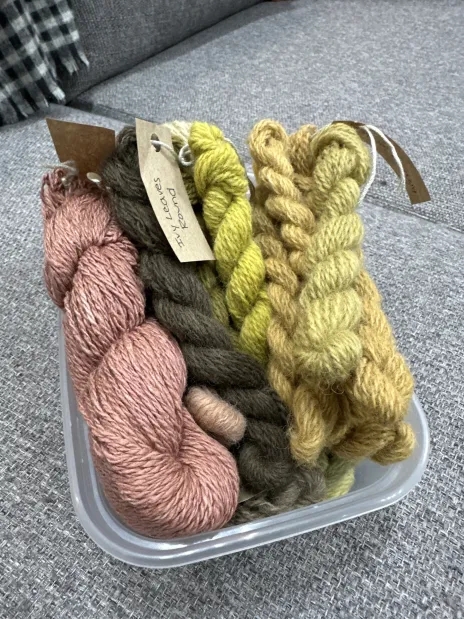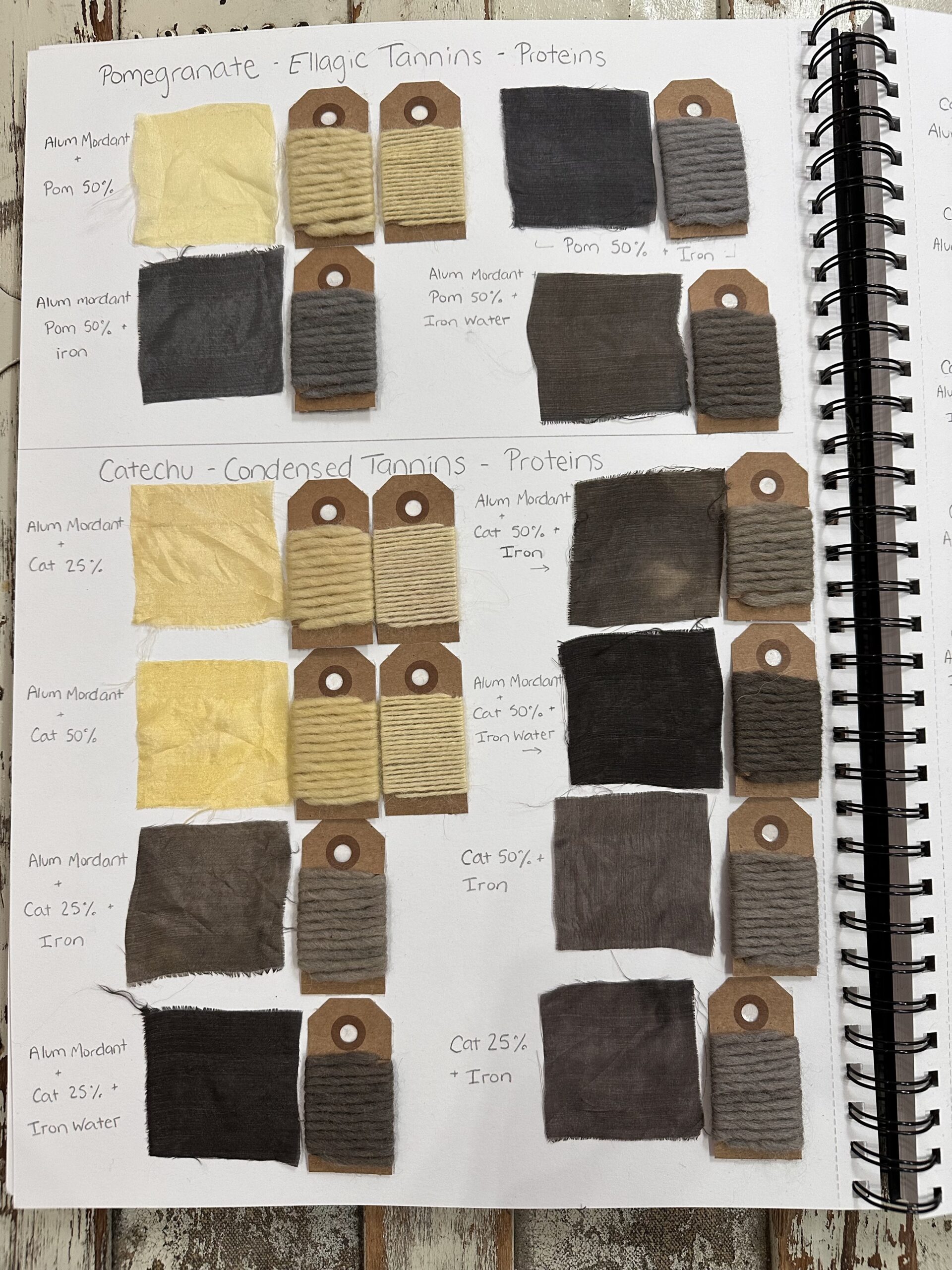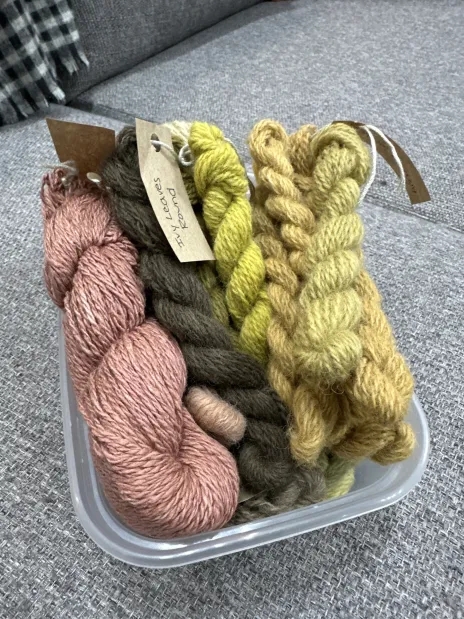One of the inspirations for starting this group site has been the phenomenal response to a few dyeing workshops and experiments I’ve done at events in Eplaheimr and Dun in Mara, and at this stage I feel like I have one particular, awesome partner in Crime – the freshly minted LADY Katie of Dun in Mara. Dun in Mara held a fighter practice weekend and Katie and I seized the opportunity to just go a bit nuts trying stuff out.
One of the nice new things fir this particular workshop was that I had samples of the same wool mordanted (explanation)(what types) in different ways, so we could experiment in real life with the effects that had on what we pulled out of our dyebaths.
<photo>
It was also a great chance to just go for experiments that we were unlikely to get to do elsewhere.
Avocado
It so happened that Master Aodh had prepared avocados and Katie had earlier nabbed the skins and pits to try out, so we worked with those for a start. The advice is to remove every trace of the pale green flesh from the skins and the stone if necessary, but it wasn’t for us. Only 4 avocados worth came to us, (of which one stone we decided to keep to grow as it looked like it was showing willing to) so we were even more surprised at the strength of the lovely pinks we got from this particularly attempt.
(hopefully I’ll get a picture of Katie’s awesome sample sheet here soon)
We simmered the skins and stones for about an hour and a half before we added our different fibres and a silk mix I also had. We then simmered that for another hour or so and left everything overnight.

Ivy
I’ve wanted to try Ivy for a long time, partly because it’s incredibly plentiful, partly because it’s the symbol of one of the households I’m in with my friends who all joined the SCA in and around the same time, House of Green and partly because I adore the colour green and had read that Ivy provided a reliable source of it. When we went to collect ivy leaves outside we found vast quantities of two distinct leaved types. It is perfectly normal for me, having grown up here, to consider A large variety of ivy leaf shapes, all looking a bit different, all being just called Ivy as just normal Ivy – I suppose Hedera if I was getting latin about it, or Eidhneán in Irish. Gathering it with people from the States suddenly made me realise that maybe paying attention to the classification matters, even if we have no horrible varieties in this country. There are easily about 15 different varieties in Ireland if I include the variegated ones people grow in garden settings, but the two most common I think are Hedera helix or Common Ivy and Hedera Hibernica Irish Ivy – I think these are what we found; the pointy fingered Common and a rounded ending in a point single lobe Irish.
We decided we would have to do it properly and try dyeing with both types separately and see if there was a difference. Not much, but yes is the answer, the Irish is a bit stronger.
There were a plenitude of berries on the Irish ivy, though they were small and green and clearly only starting out, but we just took a tiny sample for the tiny pot for a test. The results were great and I am excited to try more of them as they get bigger over the winter. We dyed four small samples of wool that was mordanted with Alum, another with oak gall tannins, another with iron and the last with copper in each.

Like the avocado we simmered the ivy leaves for about an hour then teh dye stuff in with the liquid and some of the leaves for another hour, then let the fibres soak overnight with some of the removed leaves added back on top. The darkest green came from the Iron mordanted fibres, the brightest greens from the alum and copper treated ones.
Annatto seeds will get their own entry as a dye stuff very shortly (will link here) , but I adore the yellows we got from them and they had a pleasant fruity smell while they simmered. This was another immersive dye, so simmer, we left the seeds in, add treated fibres, simmer some more.



General rule of thumb – alum mordant produces the brightest colour usually, it doesn’t itself colour the fibres and allows the ‘truest’ version of the dyestuff colour be absorbed into the fibres. The brightest yellow here is the alum mordanted fibre, as expected.


Leave a Reply